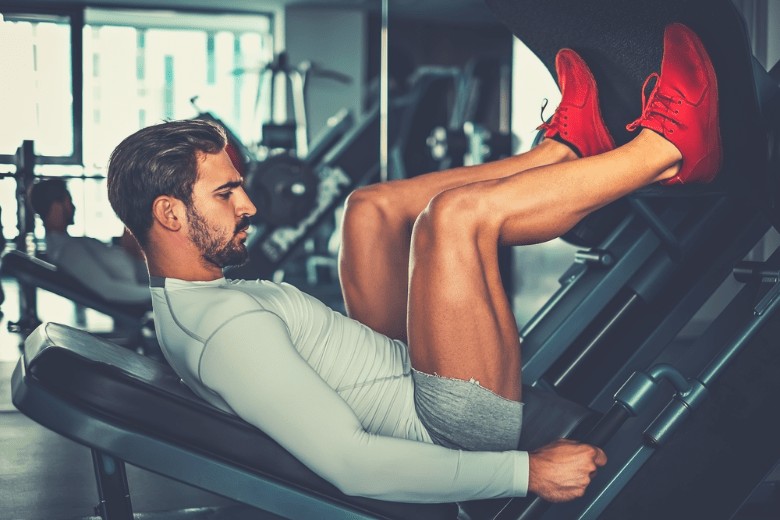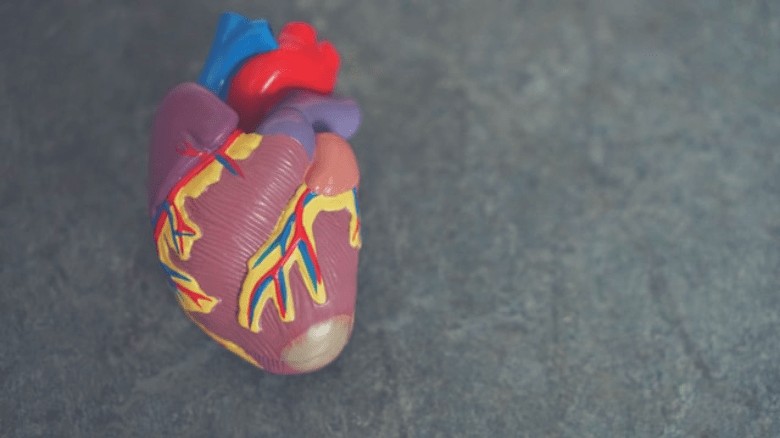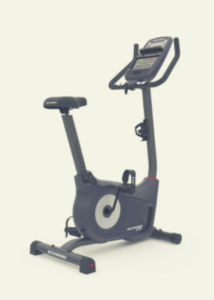Leg day. Don’t groan.
Lower body workouts are essential and are the foundation for your overall health. The benefits of working out your legs extend beyond looking good in shorts.
Since lower body workouts usually took a longer time for me to recover, I would often skip them.
Unfortunately, too many missed workouts left me physically unbalanced. I didn’t want to become one of those people with “chicken-leg syndrome”.
That probably doesn’t need too much explaining.
You can see the people who skip leg day in your minds eye can’t you. Strong chest, defined shoulders, sculpted biceps, and weak, dough-like legs.
Not a good look.
5 Benefits of Working Out Your Legs
So maybe dedicating a full day to focus on leg exercises isn’t for everyone, but skipping lower body workouts can be a major fail for your overall health.
Lower body workouts are proven to help you build more muscle in your entire body.
That’s right, you’ll pack on more lean muscle if you include lower body exercises into your routine thanks to the muscle building hormones testosterone and other growth hormones.
I couldn’t continue to ignore my lower body exercises. I could feel the imbalance in my body starting to wear on my workout and general activities.
I did a bit of research to kick-start my motivation and thought I’d share them with you.
If avoiding “chicken leg syndrome” isn’t enough to convince you not to skip leg day, read on to learn more about the benefits of working out your legs.
Burn More Calories
Your legs are comprised of some very large muscles including your gluteus maximus or glutes for short, quadriceps, calves, and hamstrings.
Working these bigger muscles requires more energy.
Muscle is an active tissue that is constantly renewing itself, therefore requiring energy (calories).
One pound of muscle burns approximately 5-6 calories per day at rest.
This would mean if you build 10lbs of muscle it would lead to energy consumption of 50-60 extra calories per day.
Since your legs muscles are larger than say your biceps your body needs to do more to repair this tissue.
The more energy needed for renewal means your body will have to burn more calories. But how many calories you ask.
Great question.
How many calories depends on a lot of different factors.
Your height and weight, the intensity of the workout, muscles worked, and total time spent exercising all add up to the total calories burned.
As an added bonus to blasting calories, you’re also boosting your metabolism.
When you break down muscle tissue through exercise, such as lifting weights, your metabolism kicks into overdrive to help repair the damaged tissue.
This results in an increase in metabolic rate and calorie burn. This increased calorie burning effect can last for up to 48 hours. Not too shabby.
Improve Overall Wellness
Benefits of working out your legs aren’t isolated to just the lower body.
Many of the exercises that target your leg muscles, like squats and lunges, also engage your upper body.
Think of how your abdominals are engaged as you keep yourself balanced during a lunge.
These compound exercises simultaneously work your entire body, especially when weight such as barbells or dumbbells are introduced.
These moves are especially valuable if you’re short on time and are looking to get an effective total body workout in.
Stability and Flexibility

Looking beyond strength alone, the benefits of working your legs out include greater stability and enhanced flexibility.
We’ll get more into how that helps you in other sports later in the article, but for now let’s just focus on how lower body workouts contribute to your overall wellness.
As you strengthen your legs through exercises such as lunges or single leg squats you are forcing your body to shift weight to one leg and increasing the challenge to your standing leg.
By doing so, you engage muscles that are key to better balance. Targeting the smaller muscles such as the hip abductors, adductors, and hip flexors are just as important as hitting the big boys like your quads and glutes.
These smaller muscles are key to balance now and in the future and it’s true what they say, if you don’t use it, you lose it.
As we age, balance and flexibility become more of a challenge.
In fact, one of the reasons the elderly tend to lose strength is that they lack the stability to exercise, which also affects their flexibility.
As we age we gradually lose muscle mass.
Lower body strength is important for all of those daily activities that we tend to take for granted when we’re young, like driving, walking and moving around safely without the fear of falling.
Maintaining lower body strength is key to aging healthy and living independently and confidently.
Heart Health
I’d be remiss if I didn’t mention the heart healthy benefits of a leg workout.
Having a healthy ticker is another of the top benefits of working out your legs.
Regardless if it’s cardio or hitting the weights, research indicates that consistently working out leg muscles leads to better cardiovascular health.
A study in Physiological Reports reports that inactivity creates serious heart problems for people who find themselves sitting too long.
Sitting for long periods of time, which most of us are guilty of, results in “endothelial dysfunction” which means the arteries become rigid.
Rigid arteries make it more difficult for them to contract and relax resulting in reduced blood flow and cardiovascular complications associated with decreased oxygenated blood reaching the kidneys and other organs.
Ouch.
According to a study shared in Harvard Health Publishing, even individuals with comprised heart health achieved a healthier heart and greater stamina through leg-strengthening exercises.
Activity in the participants’ muscles and blood vessels showed that their leg workouts boosted the flow of oxygen from the bloodstream into the muscles by 53% without making the heart work harder.
All that to say that leg workouts get the heart pumping and the blood flowing. Better, more oxygenated blood flow means overall better health.

Helps Your Brain Age Better
Contrary to popular belief, it appears that you don’t have to choose between brains and brawn after all.
While working out in general has commonly been tied to better brain health, research tells us that one of the benefits of working out your legs specifically could be a healthier brain.
Leg exercises are critical to brain and nervous system health.
Your legs send signals to the brain that help produce neural cells.
Neural cells are like blank sheets of paper in the brain that can become other important cells that perform specific functions.
These cells are essential for handling stress and adapting to challenges.
Moving your legs, especially with weight bearing exercises tells the brain to ‘stay healthy’.
Leg movement supports the creation of these neural cells.
“Weight bearing” entails anything that defines gravity which includes activities such as dancing, walking, hiking, climbing stairs, tennis, and weight-lifting.
Increase Stamina
Stamina, or the ability to maintain a prolonged physical or mental activity is important if you’re planning on any activity.
Sure, stamina is important for those big athletic endeavors like marathons or century rides, but even everyday activities can benefit from a good boost of stamina.
Endurance is another one of those benefits of working out your legs.
Whether you’re just going sightseeing, running errands, or running a 5K the ability to get through these activities depends on the strength of your lower body muscles.
Strong hips and legs will propel you farther forward, faster, which means, everything from carrying groceries to chasing after the kids, and yes, even running that marathon is a little less taxing thanks to legs that can carry you through it all.
Everything from everyday duties like lifting a box, or a strenuous workout can put you at risk of injury.
Lower body workouts create a more balanced muscular structure and strengthening these muscle groups will also reduce your risk of injury.
Imbalances in the body is what increases your risk of injury because some muscles and joints will try to overcompensate for other ones that are too weak to engage properly.
This leads to discomfort and strains.
Performing functional exercises, like lunges and squats , promotes stability in the knee, which, according to the American Council on Exercise, is your best bet to prevent an ACL tear.
Exercising to prevent injury can mean the difference between months or rehab and staying in the game.
As with all exercises, proper form is key!
If you’re doing lower body exercises improperly, you can definitely increase your risk of injury such as a torn ACL or back strain which can often be attributed to weak stabilizing muscles in your core abdominal muscles and legs.
Helps You Perform Better Other Types of Exercises Better
The large muscle groups in your legs are responsible for stabilizing your entire body and can improve your overall stability and balance which can help you in other activities.
Consider how many movements in sports are performed on one leg. Shooting a layup in basketball or pushing off a mound in baseball.
Even if the primary movement is in your upper body, your lower body is still creating power and stability.
Come to think of it, even when you are in the middle of a bench-press your lower body is engaged, providing a stable platform to lift from.
Your lower body is responsible for driving into the ground to create power, which travels up through your core to support those upper-body movements.
Training the lower body also helps improve proprioception.
Proprioception is “the body’s ability to transmit a sense of position, analyze that information and react (consciously or unconsciously) to the stimulation with the proper movement.”
Proprioceptors control the body’s abilities of balance, coordination and agility. Improving proprioception, provides the balance skills necessary to maintain stability; hone agility to quickly change direction when necessary; and tune coordination physical activities can be performed accurately and consistently.
When your body is in action, you’re not just using muscles.
Your joints and their ability to move their entire range of motion without pain or stiffness is also a large part of it.
It’s also what we call mobility. Jumping higher, running faster, and the ability to move without pain all starts with greater mobility in your lower body, a benefit of working out your legs.
It’s important to include exercises that work all your major joints through an appropriate range of motion, which includes those in the upper body as well as the lower body.
These workouts will focus on moving one joint through a full range of motion while also stabilizing the joints that aren’t supposed to move like during squats and lunges.
A close cousin of mobility is flexibility.
Whereas mobility is the “ability of a joint to move actively through a range of motion”, flexibility is “the ability of a muscle or muscle groups to lengthen passively through a range of motion”.
In other words, flexibility in your hips and knees for example, help you to sink deeper into a squat.
Working out your legs helps maintain the flexibility of your lower body.
Stretching is an integral part of flexibility training. If you’re working out frequently or at any level of intensity, you should consider adding flexibility training into your regimen.

Final Thoughts
Your leg muscles are the biggest muscle group in your body.
The benefits of working out your legs include not only those benefits mentioned above, but others throughout the body such as increased muscle mass, strength and range of motion.
Training your leg muscles doesn’t have to be activities that seek to isolate those muscles.
Meaning no matter what activity you choose, whether a leisurely walk or an intense workout you automatically burn more calories and boost your metabolism.



